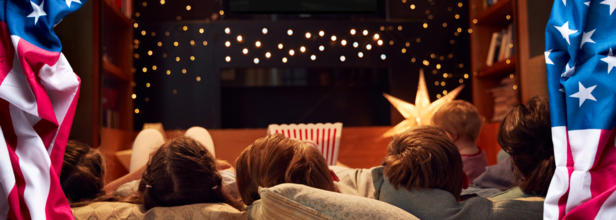- Health Conditions A-Z
- Health & Wellness
- Nutrition
- Fitness
- Health News
- Ayurveda
- Videos
- Medicine A-Z
- Parenting
- Web Stories
What Happens To Your Body If You Drink Soda Everyday- Its Worse Than You Think

Image Credit: Canva
Soda is the most popular carbonated beverage enjoyed worldwide for its fizzy sweetness and instant refreshment. But while an occasional soda may not do much harm, drinking it every day can have profound effects on your body. From blood sugar spikes to long-term organ damage, here's a closer look at what happens when soda becomes a daily habit and why it's worse than you think. The moment soda comes into contact with the tongue, your body reacts dramatically. Within 10 to 15 minutes, the sugar is absorbed by the intestines, resulting in a quick boost in blood sugar levels. A single can contains about 10 teaspoons of sugar, more for females and close to the suggested daily amount for a male, according to the American Heart Association.
The infographic detailing the breakdown, created by The Renegade Pharmacist, a popular one to view across the internet, suggests that it outlines the ill effects of the soda on our health within under 60 minutes after consumption. Designed based on the research of a health writer by the name Wade Meredith, the infographic details several ill effects associated with drinking Coke. Within ten minutes of the consumption of the Coke, ten teaspoons of sugar hit your body. Normally, such sweetness would trigger vomiting response, but the phosphoric acid in the soda suppresses it. The Domino Effect of Soda on Your Organs
At 20 minutes, your body will release insulin because of sugar overload and the liver begins to convert the excess into fat.
By 40 minutes, the caffeine in the soda has been absorbed and begins to take effect, causing dilation of pupils, increased blood pressure, and another sugar release into the bloodstream.
At 45 minutes, dopamine production increases, stimulating pleasure centers in the brain just like addictive substances.
And 60 minutes later, the diuretic effect has begun, resulting in fluid loss, including essential nutrients such as calcium, magnesium, and zinc, which are important for bone health.
This sugar rush cycle, followed by a crash, makes you feel drowsy, cranky, and craves more sugar, creating an unending vicious loop that will put you in harm's way long-term.
What Does Soda Do to Your Body?
Stomach
Regular soda consumption is linked to weight gain and obesity. A 2021 study published in Preventing Chronic Disease found that 63% of U.S. adults consume soda daily, which has been strongly associated with excessive calorie intake. Unlike solid food, soda doesn’t provide satiety, meaning you’re likely to consume more calories without realizing it. Additionally, high sugar intake leads to insulin resistance, increasing the risk of type 2 diabetes.
Soda is acidic and can irritate the stomach lining, especially in people who have acid reflux or other gastrointestinal issues. The carbonation in soda causes bloating, gas, and discomfort, while excess sugar disrupts gut microbiota, which can lead to digestive problems and inflammation.
Heart
Daily soda consumption heightens the possibility of heart diseases by a number of folds. A study at the Journal of the American Heart Association revealed that there is a chance of 98% higher and 53% higher likelihood that adults who tend to drink much soda have less HDL in their blood streams and high levels of triglycerides, thus increasing the occurrence of artery blockage plaques, which has a high danger of heart attacks and stroke.
High fructose levels in soda also contribute to increasing abdominal fat, thus raising cardiovascular disease risks. When sugar cannot be used as energy, the liver converts it into fat, which piles up around organs and contributes to metabolic syndrome.
Brain
Soda impacts brain chemistry in ways that make it very addictive. One study published in the *British Journal of Sports Medicine* found that sugar had a similar effect on the brain as addictive drugs. The swift release of dopamine after soda is consumed makes it hard to cut back because the brain begins associating soda with pleasure and reward. Over time, this results in increased cravings and excessive consumption, much like substance addiction.
Additionally, soda dries up the body because of its diuretic properties, which cause electrolyte imbalances leading to digestion and overall health problems.
Also Read: Your Daily Can Of Soda May Increase Your Risk Of A Heart Stroke
Oral Health
Soda is acidic and sugary, which does not help much with dental health. A 2022 study published in *Biomimetics* has associated frequent soda consumption with tooth decay, enamel erosion, and even tooth loss. Sugar in soda combines with oral bacteria to produce lactic acid, which dissolves the enamel of the teeth. Soda also suppresses saliva production, which is needed to neutralize acids and protect the teeth.
Gum health also suffers because sugar and acid encourages inflammation, which leads to gum disease. Gum disease, left untreated, can lead to receding gums, infections, and eventual loss of teeth.
Kidneys and Liver
Soda has been linked to increased risks for kidney disease as well as non-alcoholic fatty liver disease (NAFLD). The high phosphorus levels in soda place extra strain on the kidneys over time. These can lead to kidney stones and chronic kidney disease.
The liver has to metabolize sugar, which is overworked by excessive soda consumption. Non-stop conversion of sugar into fat causes liver fat, and a high risk for NAFLD increases the likelihood of cirrhosis or even liver failure.
What Are the Healthier Alternatives?
You don't need soda; replacing it with a healthy drink is an excellent decision to make in terms of well-being. The alternatives are as follows:
- Infused water: Add fruit or herbs for a natural flavored drink.
- Flavored or unflavored seltzer: Provides the fizz without the sugar.
- Kombucha: Is a fermented, probiotic- rich tea beverage that supports great gut health, and sparkling teas are refreshing yet full of antioxidant power.
- No-alcohol Sparkling wine : Great idea for special celebration without the burden of sugar loads.
Drinking soda every day may seem insignificant, but those long-term damages to your body can be more severe.
From metabolic disorders to heart disease, digestive issues, and tooth decay, soda's impact goes far beyond empty calories. Reducing or eliminating soda from your diet can help protect your body, improve overall health, and reduce the risk of chronic disease. If you're looking for an alternative, opt for refreshing, natural beverages that hydrate and nourish rather than harm. Your body will thank you for it.
Prevalence of Self-Reported Intake of Sugar-Sweetened Beverages Among US Adults in 50 States and the District of Columbia, 2010 and 2015. Prev Chronic Dis. 2021
Sugar addiction: is it real? A narrative review. British Journal of Sports Medicine 2018
Get the Facts: Sugar-Sweetened Beverages and Consumption. CDC
Impact of Highly Acidic Beverages on the Surface Hardness and Weight Loss of Human Teeth. Biomimetics (Basel). 2022
Healthier Popcorn Alternatives You Can Try For Your July 4 Movie Nights

Credits: Canva
The Fourth of July is usually all about fireworks, BBQs, and patriotic playlists—but let’s not forget another tradition that’s gained popularity in recent years: movie nights at home. Whether you’re winding down from a long day of celebrations or just skipping the crowd to watch classics under the stars, a cozy night in calls for sweatpants, blankets, and of course, snacks.
Popcorn may be the go-to, but this Independence Day, consider breaking from tradition with some revolutionary snack choices. Did you know there are plenty of whole grains you can pop for a lighter, crunchier twist? Sorghum, amaranth, quinoa, and more—these ancient grains bring unique textures and flavors without the pesky hulls that stick in your teeth.
Also Read: These Steps Will Wash Blueberries The Right Way And Remove Pathogens And Pesticides Residue
Not All Grains Pop—But They Puff Beautifully
Let’s clear things up: most ancient grains don’t pop into fluffy, buttery clouds like corn does. Instead, they puff when heated. So, if you’re trying them for the first time, expect a toasty crunch rather than big, airy bites. But what they lack in size, they make up for in taste, nutrition, and charm.
1. Sorghum
If you’re new to puffing grains, start with sorghum. It looks like tiny popcorn and delivers a similarly satisfying crunch. Lauren Harris-Pincus, MS, RDN, calls it a “gluten-free, fiber-rich, antioxidant-packed” snack that’s grown right here in the U.S.
Bonus: Sorghum doesn’t have a hull, so there’s zero risk of those annoying popcorn bits in your teeth. Sprinkle it over salads, soups, or even ice cream for an unexpected Fourth of July twist.
2. Amaranth
Amaranth is a quick-popper and packs serious nutrition—think protein, fiber, and minerals. Lisa Richards, nutritionist and author of The Candida Diet, notes that it’s gluten-free and nutrient-dense. Its tiny size makes it ideal for mixing into granola bars, muffins, or DIY cereals. Puffed amaranth adds a fun crunch to yogurt parfaits or fruit bowls at your 4th of July breakfast table.
3. Barley
While barley doesn’t exactly pop, it does crack and puff slightly, resulting in a chewy, nutty snack. It’s not the flashiest grain, but it delivers a mellow, toasted flavor perfect for a post-fireworks wind-down snack.
4. Buckwheat
Puffed buckwheat doesn’t just sound fun—it’s actually delicious. Crunchy and tender, this grain works best as a topping on oatmeal, fresh fruit, or nut-butter toast. If you’re not up for DIY puffing, try pre-puffed options like Lil Bucks for easy snacking.
5. Quinoa
Quinoa pops small, but brings bold flavor. While its shape doesn’t change much, its texture gets light and crisp. Try puffed quinoa on salads, in trail mix, or as a cereal replacement for a healthier holiday breakfast.
Also Read: This Year, Doctor's Day Reminded That Doctors Too Are Humans And Can Get Emotionally Exhausted
How to Puff Ancient Grains?
Puffing ancient grains is surprisingly simple—no oil required! Here’s how to do it:
- Heat a medium saucepan over medium-high heat until a drop of water sizzles and evaporates.
- Add grains in a single layer, and shake the pan frequently.
- Listen and watch: grains will crackle, puff, or lightly brown. Remove promptly to avoid burning.
- Each grain reacts differently to heat, so keep an eye on texture and color. Overheating can result in bitterness.
These Steps Will Wash Blueberries The Right Way And Remove Pathogens And Pesticides Residue

Credits: Canva
On Tuesday, the US Food and Drug Administration (FDA) announced a recall of 12,000 pounds of organic bulk blueberries which was distributed by Alma Pal International LLC. According to the agency, the blueberries have been tested positive for Listeria monocytogenes, a potentially dangerous bacteria known to cause foodborne illness.
READ: FDA Recalls Blueberries Over Listeria Risk Ahead of July 4th Festivities
Amid all this, one question that concerns many is how to wash blueberries the right way?
While water alone can remove debris, food scientist Bryan Quoc Le, Ph.D., says, as reported in marthastewart.com that it is not enough to eliminate pathogens or pesticide residue.
However, there are tips and tricks that can remove such residue. For this, your household staples like white vinegar or baking soda can work.
Vinegar's low pH makes it very effective at dissolving certain pesticide residues and inhibiting bacterial growth. Baking soda too works well when it comes to neutralizing bacteria through its alkaline nature. However, it may leave a bitter residue if it is not rinsed properly.
Also Read: Healthier Popcorn Alternatives You Can Try For Your July 4 Movie Nights
Why Isn't It Enough To Just Rinse Blueberries With Water?
Simply rinsing blueberries with water may wash away visible dirt, but it’s not enough to tackle bacteria, mold, or pesticide residues. According to Le, using vinegar or baking soda is more effective, as both alter the pH of the berry’s surface—creating an environment that disrupts microbial growth and helps extend shelf life better than neutral water.
Washing Trick: Why Do Baking Soda and Vinegar Work?
Baking Soda
As an alkaline cleaner, baking soda is effective against a different range of bacteria. However, it may leave a slightly bitter residue if not rinsed off thoroughly.
Vinegar
White distilled vinegar is ideal for cleaning produce. Its acidity helps break down certain pesticides—especially those with a basic pH—and inhibits bacterial growth. “It’s the pH that matters, not the vinegar type,” says Dr. Le. Apple cider vinegar works too, but white vinegar is more affordable and equally effective.
How To Clean Blueberries The Right Way?
For vinegar wash, follow these steps:
- Start with mixing 3 parts cold water to 1 part white vinegar. Use a large bowl to mix properly.
- Now, add blueberries and let it soak for 5 to 10 minutes.
- Wash your hands and then you can then wash the blueberries thoroughly, rub it with your hands to help loosen debris.
- Once done, drain the water and wash the blueberries again with running cold water to remove any vinegar residue
- Dry completely on a clean dish towel or paper towel before you store it in the refrigerator.
For baking soda wash, follow these steps:
- In a large bowl, dissolve 1 teaspoon of baking soda in 2 cups of cold water. Stir well until fully mixed.
- Gently add the blueberries to the solution and let them soak for 5 to 10 minutes. This helps loosen dirt, bacteria, and pesticide residues.
- Drain the berries and rinse them well under cool running water to remove any remaining baking soda.
- Spread the blueberries out on a clean dish towel or paper towels and pat them dry. Let them air dry completely before storing in the refrigerator to prevent mold growth.
Note: Make sure you do not soak the blueberries for longer than 15 minutes. Food scientist warns that the skin can begin to degrade if the blueberries are soaked for too long and it can cause flavors to dissolve in the cleaning solution.
Protein Bars Are Not As Healthy As You May Think They Are - Avoid These Components For Future Buys

(Credit-Canva)
When it comes to saving time, we have built many things, from quicker transportation to smart home appliances. These things reduce not just the process as well as the effort so that we can focus on more important things. Similarly, protein bars were not only an easy but also efficient way to get your daily nutrient intake. However, are they as healthy as they seem?
Less Protein, Lower Quality?
A new study published in Scientific Reports (Nature) raises questions about the actual nutritional value of many protein bars. The study found that a significant number of the 1,600+ bars tested contained less protein than advertised. Even more concerning, the quality of the protein in most bars was often poor, impacting how well your body can absorb it.
What the Study Found?
Researchers looked at information from a large online database of food products. They started with about 4,600 protein bars. Many of these bars were from the U.S., so it's likely that a lot of the 1,641 bars they ultimately tested are available where you shop. The researchers divided the bars into groups based on their protein type:
- Only plant protein (like from peas or rice)
- Only animal protein (like from milk)
- A mix of milk, egg, and soy protein
- A mix of milk, collagen, and soy protein
Many bars weren't actually "high protein"
While most bars got at least 20% of their calories from protein, about one-fifth of them didn't. This standard is actually stricter than what our food authorities consider "good" or "excellent" sources of nutrients.
Protein in some bars was hard to digest
How well the protein in the bars could be digested varied a lot, from less than half to over three-quarters. Surprisingly, some bars with proteins generally considered "high-quality" (like animal protein or soy) were harder to digest. High-quality proteins are important because they contain all the necessary building blocks your body can't make itself, and they're usually well-absorbed for muscle repair and growth.
Protein Bars: Go or No Go
Because so many people are trying to eat more protein, it's easy to think all protein bars are healthy. But this new study shows an important truth: the overall nutrition of a food can't always be judged by just one thing, like its protein content. Even if a bar has good protein, your body might not fully use it.
It's also worth remembering that protein bars are often highly processed. Eating a lot of these ultra-processed foods might be linked to health problems like a higher risk of obesity, heart disease, and type 2 diabetes.
On the other hand, for some people, protein bars can be very useful. If you have higher protein needs, or if your appetite isn't great (maybe due to medication or illness), a protein bar offers a convenient way to get a protein boost in a small serving. But even then, they shouldn't be your only protein source; they should be a supplement.
For better quality protein in a less processed form, consider options like Greek yogurt, cottage cheese, hard-boiled eggs, jerky, nuts, and seeds. These also offer other good nutrients like calcium, healthy fats, and fiber.
How to Pick a Healthier Protein Bar
If you still want to choose a protein bar, here are some tips:
Look for higher protein
Even if other ingredients affect how well protein is digested, it's still smart to choose bars with more protein. Ideally, this protein should come from animal sources like whey or milk, or from plant sources like soy or pea.
Check for low added sugar
While there isn't a strict rule for "low" added sugars, it's recommended to keep your added sugar intake to less than 10% of your total daily calories.
© 2024 Bennett, Coleman & Company Limited

